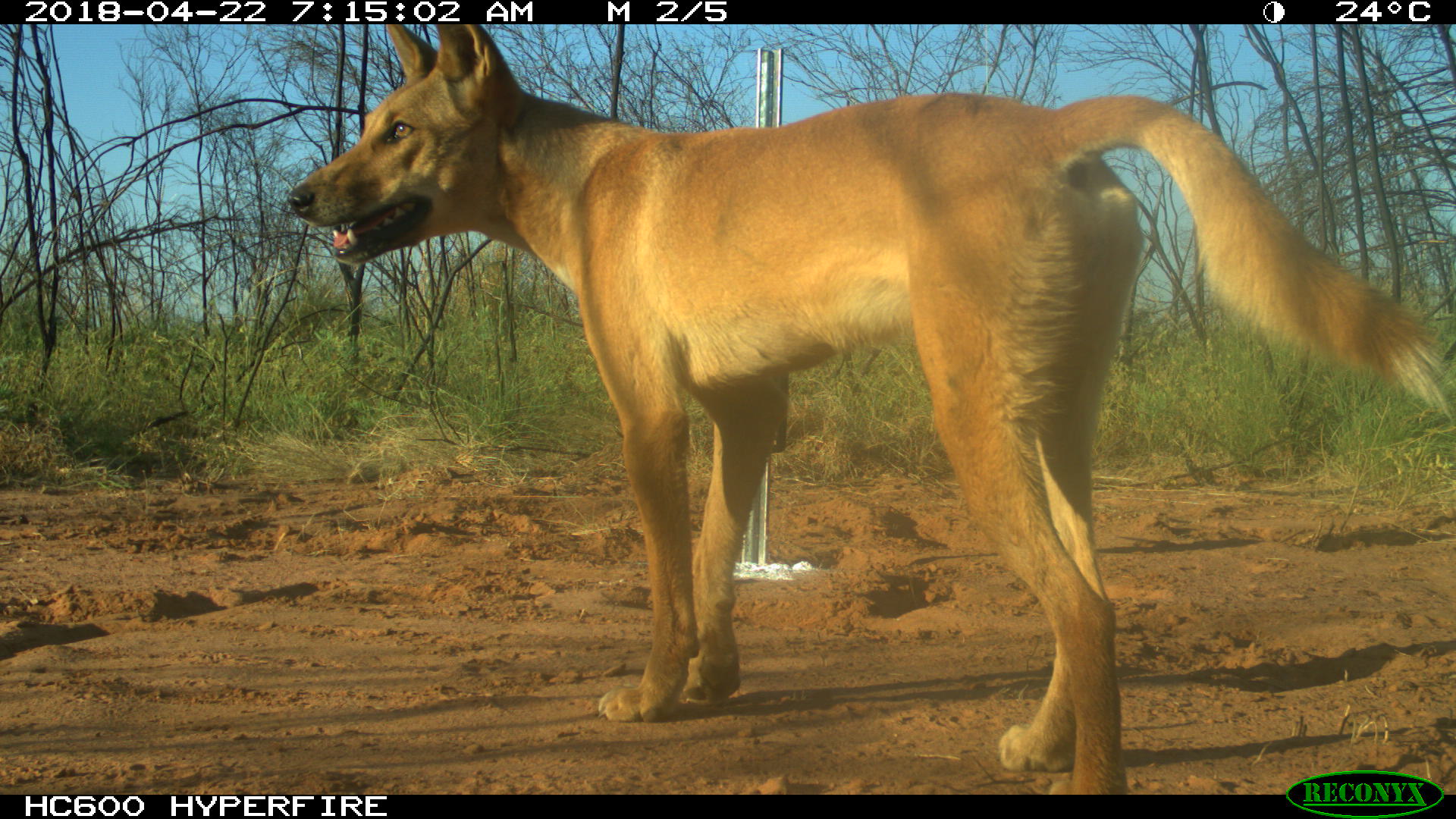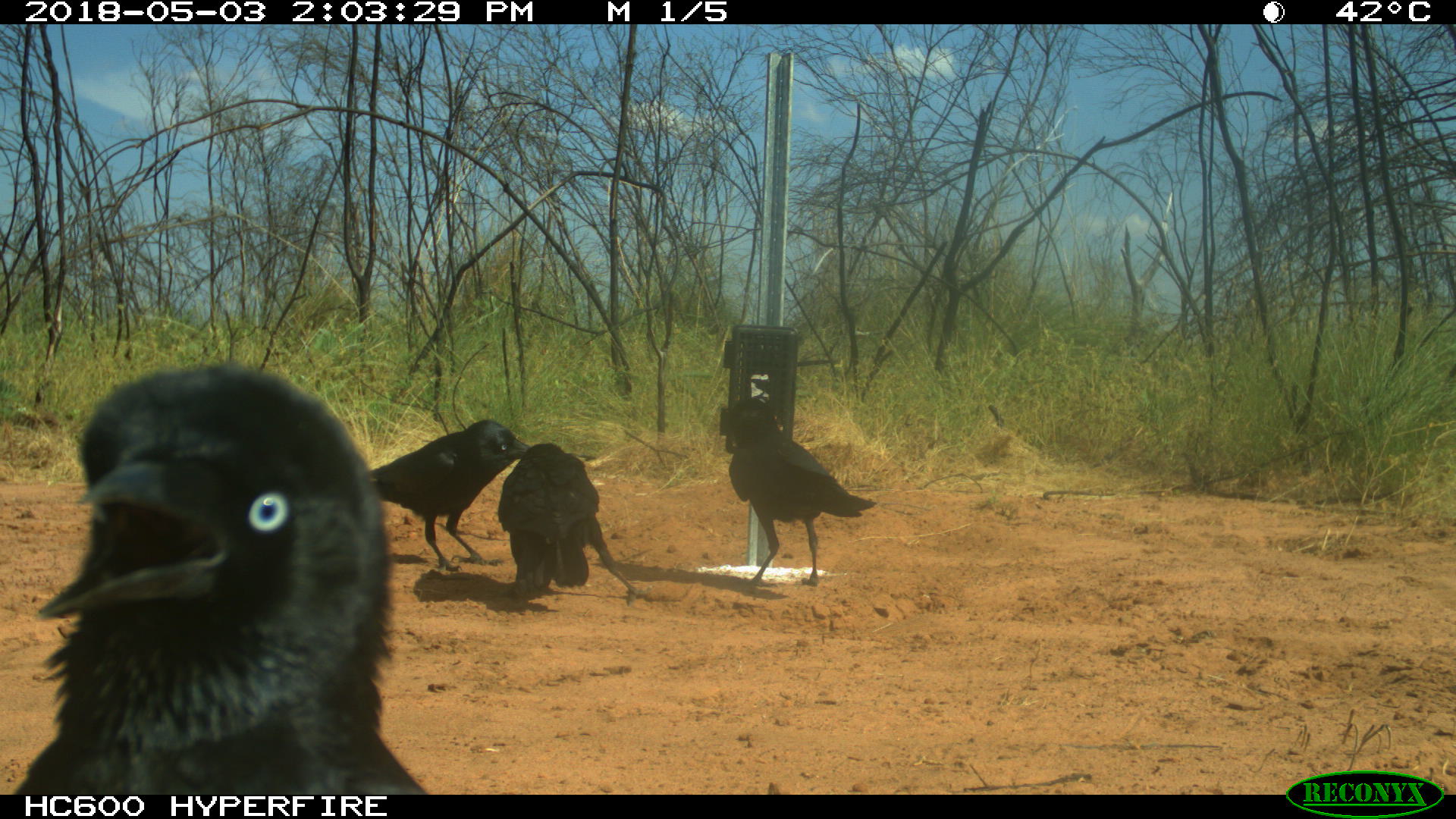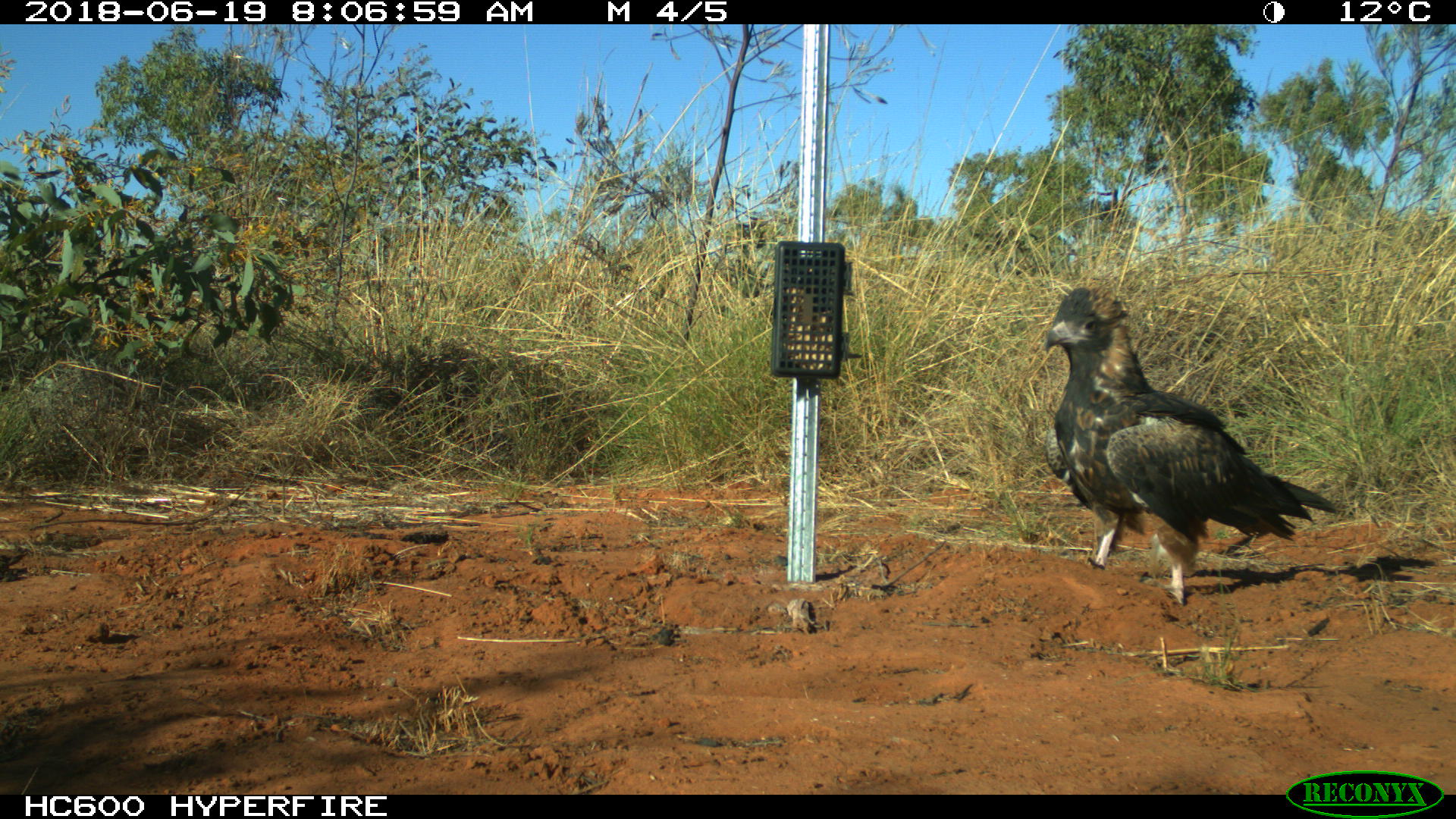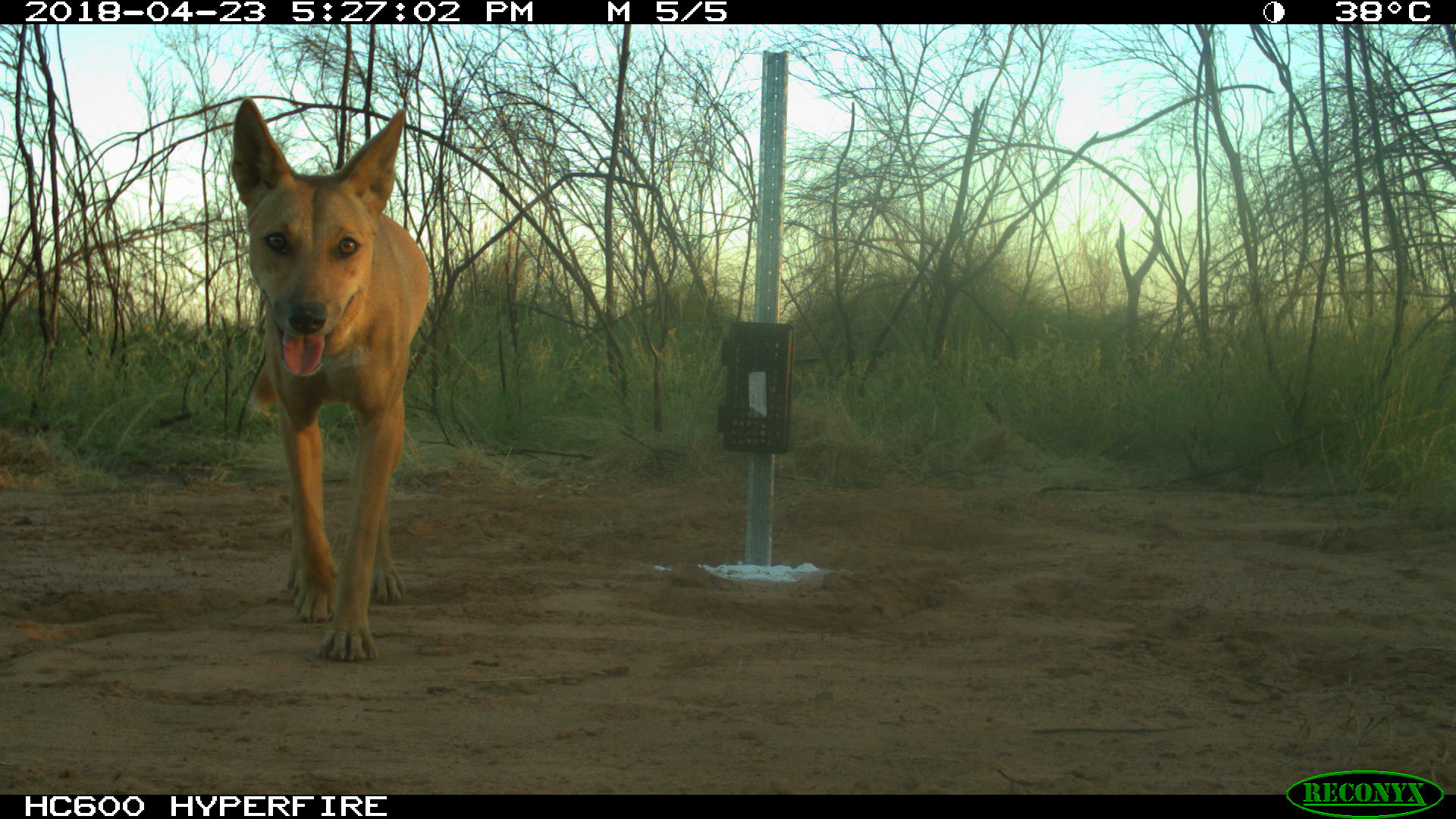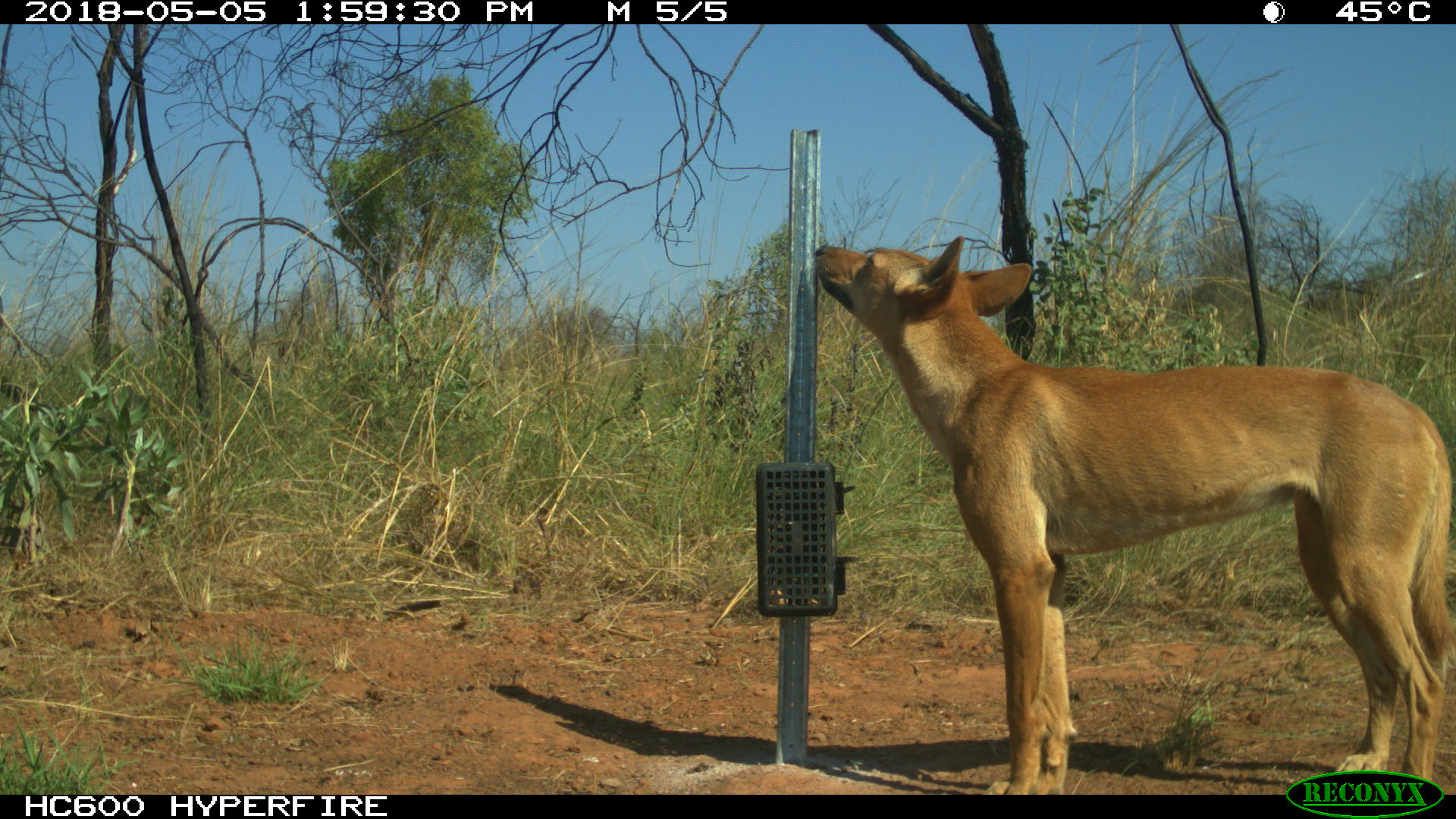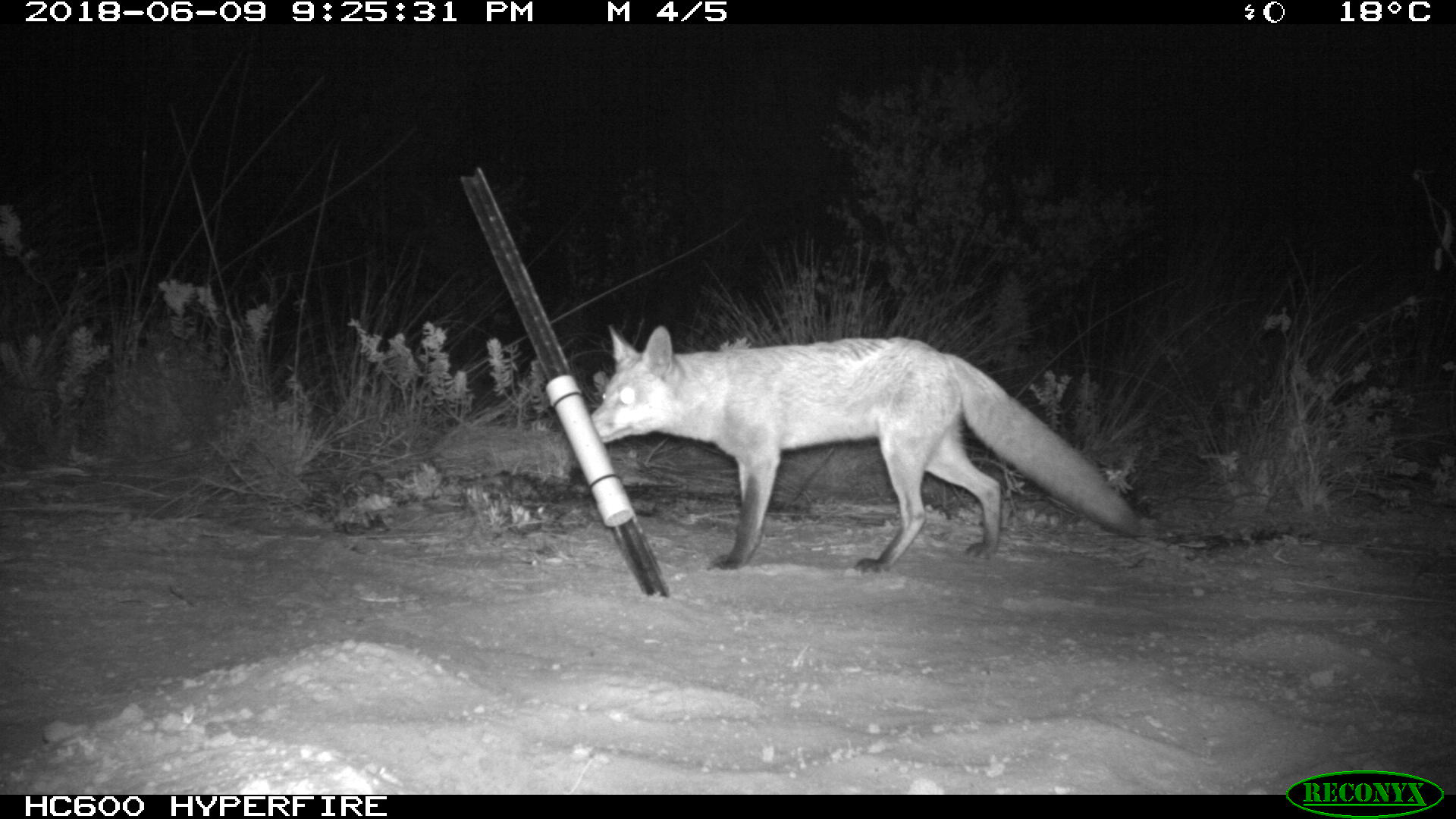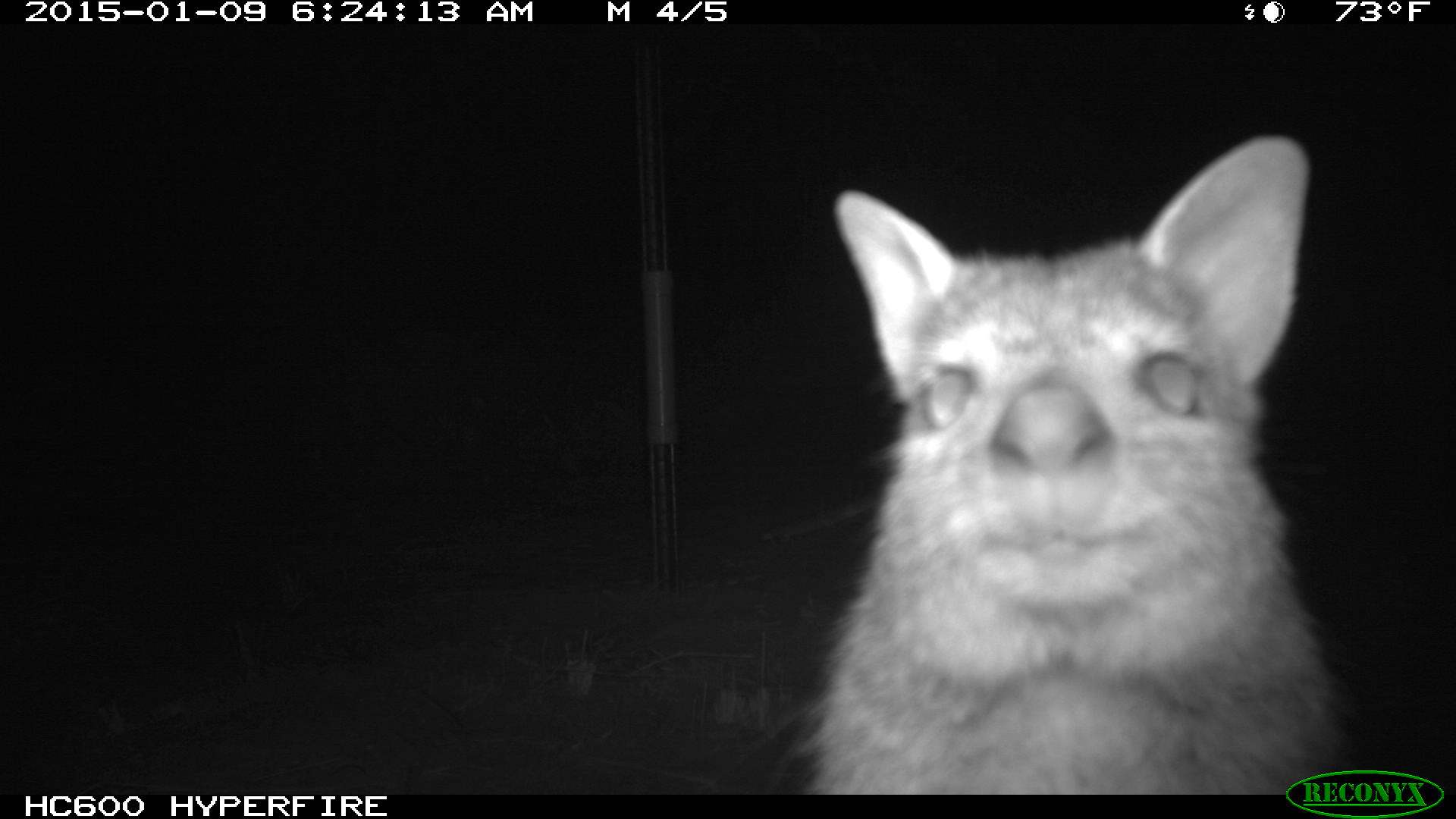Western Kimberley Spectacled Hare-Wallaby Survey
The spectacled hare-wallaby (Lagorchestes conspillatus) is a medium-sized macropodid whose range has declined substantially in the Kimberley region of Western Australia due to a number of threats including altered fire regimes, cattle grazing and feral cats. The recent rediscovery of this species in the region led to the development of a larger survey effort in collaboration with the World Wildlife Fund - Australia and several indigenous ranger groups including the Yawuru Country Managers and the Karajarri and Nyikina Mangala rangers. We used ArcGIS to develop a model of spectacled hare-wallaby preferred habitat based on historical locations and then deployed 40 SpyPoint Solar sensor cameras to sample across this gradient of predicted habitat preference over a deployment period of 8 weeks. Cameras were spaced a minimum of 4 km apart, set 30 cm off the ground and baited with a combination of peanut butter and oats.
The 40 cameras for this study were set up approximately 50 m from any dirt road and vegetation in the field of view of the camera was trimmed or removed in order to reduce the number of false triggers. Despite this effort some cameras had a large number of false triggers causing the SD cards to fill up and overwrite earlier photos. Hence some cameras did not capture photos over the entire 8 week deployment period but had reduced effect deployment periods. In addition to these 40 off-road cameras we also deployed an additional 10 road-placed cameras in order to better detect the presence of predators such as feral cats and dingoes which are more likely to be detected along roads. The cameras placed on roads included a mix of brands - Reconyx, Bushnell, Scoutguard - but did not include any SpyPoint cameras. These road-based cameras were set up opportunistically and did not follow any specific spacing guidelines.
The 40 cameras for this study were set up approximately 50 m from any dirt road and vegetation in the field of view of the camera was trimmed or removed in order to reduce the number of false triggers. Despite this effort some cameras had a large number of false triggers causing the SD cards to fill up and overwrite earlier photos. Hence some cameras did not capture photos over the entire 8 week deployment period but had reduced effect deployment periods. In addition to these 40 off-road cameras we also deployed an additional 10 road-placed cameras in order to better detect the presence of predators such as feral cats and dingoes which are more likely to be detected along roads. The cameras placed on roads included a mix of brands - Reconyx, Bushnell, Scoutguard - but did not include any SpyPoint cameras. These road-based cameras were set up opportunistically and did not follow any specific spacing guidelines.

